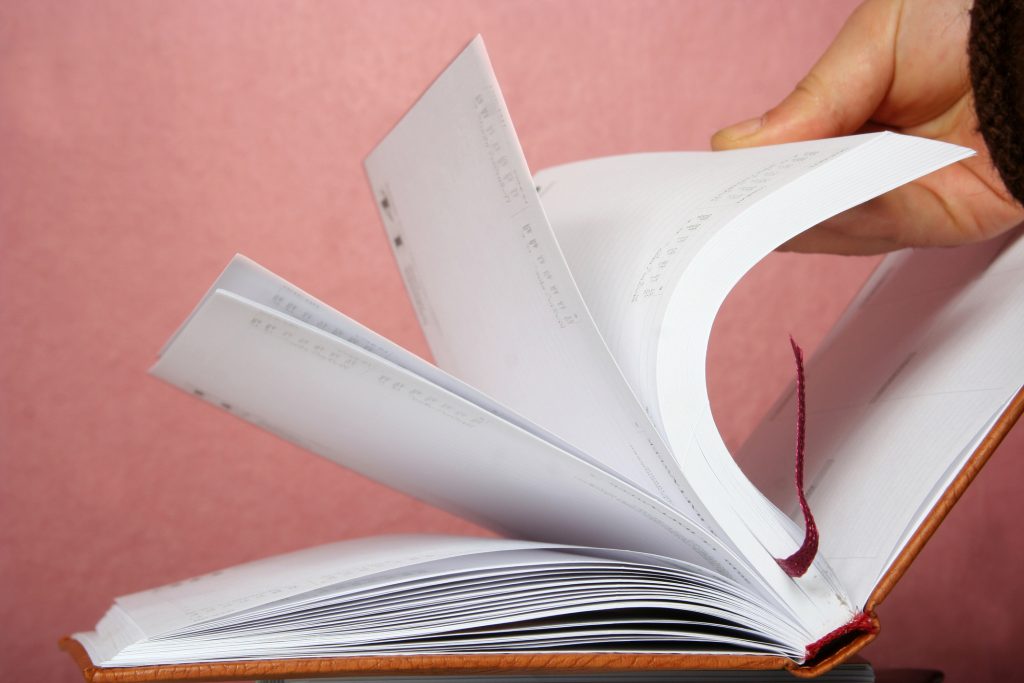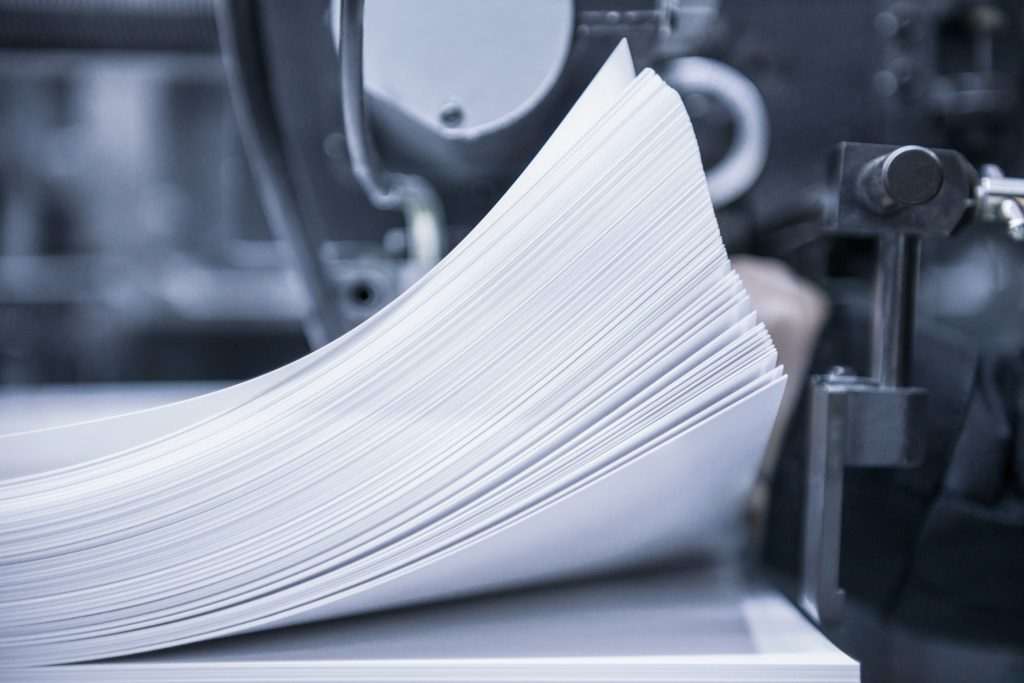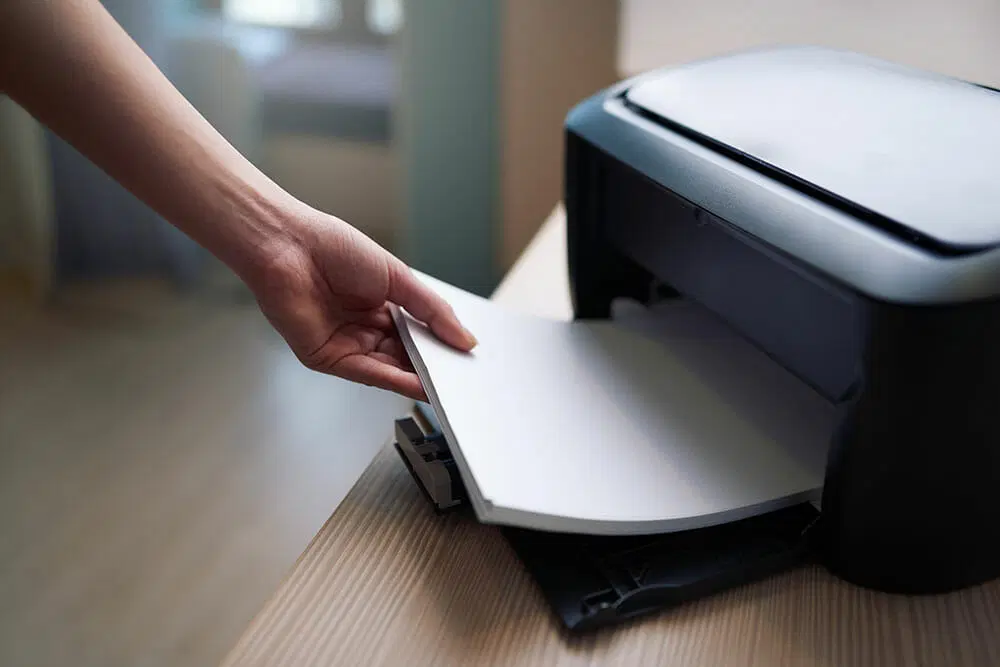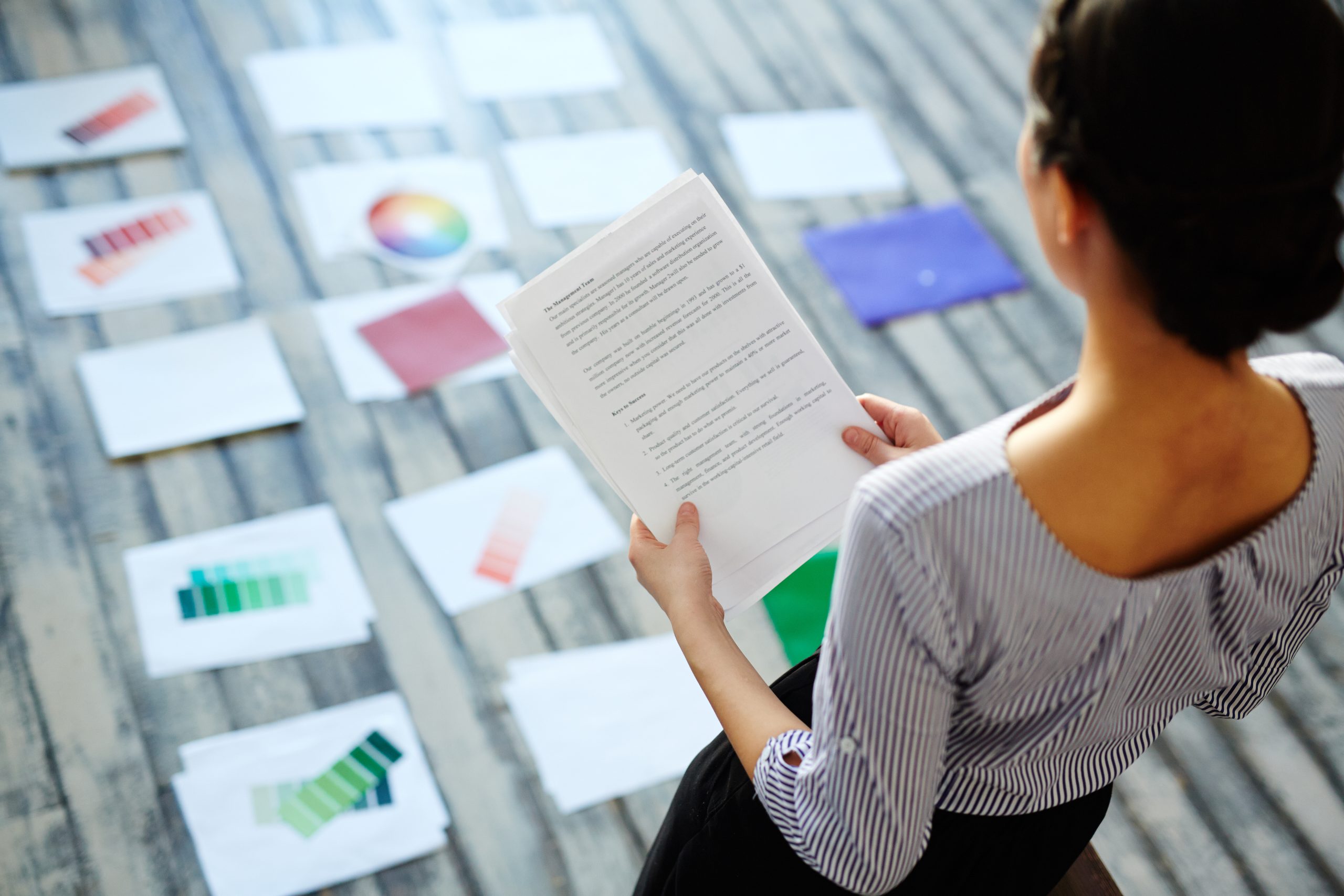Choosing the right paper for your print projects is a critical decision that can greatly impact the overall look and feel of your final product. Whether you’re designing brochures, invitations, business cards, or any other printed materials, selecting the perfect medium is essential to convey your message effectively.
In this comprehensive guide, we will explore the factors to consider when choosing paper, such as weight, finish, texture, and color. We’ll discuss the different types of paper available, their unique characteristics, and the suitable applications for each.
By understanding the nuances of paper selection, you’ll be equipped with the knowledge to make informed decisions that enhance the visual appeal and quality of your print projects. Get ready to embark on a journey of paper exploration and elevate your print materials to the next level.
The Basics Of Choosing The Right Paper For Your Project

When starting any print project, choosing the right paper is crucial to achieving the desired outcome of the final print. The perfect medium can make all the difference in the quality and appearance of the printed material. Here are some basics to keep in mind when determining the right paper for your print project.
Firstly, consider the purpose of your print project. Will it be a professional report, a brochure, or artwork? The type of document will influence the paper type that is needed. Secondly, take into account the printer’s printing specifications, such as ink capacity and color capabilities. This will help determine the correct type of paper to use to ensure the best print quality.
There are various types of paper and finishes available, each with its own unique characteristics. Uncoated paper is a popular choice for business documents, as it is more cost-effective and easy to write on. Coated paper, on the other hand, is used for high-quality prints such as photographs or brochures, as it creates a sharp, vibrant image. Glossy paper typically works best for printing photographs or images that require bright colors and hard edges. Watercolor papers have a textured surface, making them popular among artists. And colored paper can add a creative touch to any project, and is especially useful for printing fliers or invitations.
It’s important to also consider the weight and thickness of the paper, as well as the surface texture and color of the paper. In addition, the size and shape of the paper must be taken into account to ensure the right medium is chosen. Paying attention to these factors will ultimately lead to a successful print project.
Therefore, choosing the right paper is an essential part of any print design process. Various types of paper are available to suit different purposes, and the right medium must be selected based on the intended use, printer’s specifications, and desired print quality. Keep these basics in mind to ensure that your project yields the perfect print results.
Types of Paper
There are various types of paper to consider when choosing the right medium for your print project. The type of paper, along with its weight, texture, and color, will have an impact on the overall quality and look of your final product. In this section, we’ll take a closer look at some of the most common types of paper available and their unique characteristics.
Uncoated Paper
Uncoated paper is a popular choice of medium for many print projects due to its eco-friendly and natural-looking appeal. It is an excellent option for eco-conscious consumers and millennials who prefer a more organic texture in their printed materials.
One of the primary benefits of uncoated paper is its environmentally sustainable appeal. It is made fromwood pulp and does not require any coating or chemical treatment, making it one of the most environmentally friendly paper types on the market. Additionally, uncoated paper is less brittle than coated paper, which makes it less prone to tearing and folding, making it ideal for text-heavy brochures or documents.
Another benefit of uncoated paper is that it provides a natural, organic texture, which can add depth and character to your printed materials. This texture gives your artwork a unique look and feel, which is appealing to many artists and designers. The uncoated paper’s texture also allows for better ink absorption, resulting in sharper, more vibrant print colors.
However, uncoated paper also has its drawbacks. Due to its lack of coating, uncoated paper can be more susceptible to glare, which can make printed photos look dull and less vibrant than on coated stock. This makes it less ideal for print projects that heavily feature photographs and require a high level of vibrancy and contrast.
If you are looking for a more eco-friendly and natural-looking paper medium for your print project, uncoated paper is an excellent choice. Its unique natural texture gives printed materials a distinct look and feel that is highly sought after by many millennials and environmentally conscious consumers. It is a good choice for text-heavy brochures, but may not provide the same level of vibrancy and contrast as coated stock for projects featuring photographs.
Coated Paper

Coated paper is a common medium used in print projects, and it differs from uncoated paper in that it has an additional layer added to its surface. This coating can be made of different materials such as clay, latex, or wax, and it provides several advantages over uncoated paper.
The primary benefit of using coated paper is that it produces high-quality and sharp prints. The coating enhances the brightness and contrasts of the print, resulting in deeper and darker blacks and vibrant colors. This makes it an ideal medium for print projects such as flyers, posters, and brochures that require high-quality graphics and visuals.
Another advantage of coated paper is that its smooth surface texture provides a professional and polished finish. This creates a positive impression on the reader or viewer, making it suitable for marketing and promotional materials that require a sophisticated look.
However, a disadvantage of using coated paper is that it can be more prone to smudging or fingerprints due to its smooth surface. Additionally, coated paper has a shorter lifespan compared to uncoated paper as it is more susceptible to ageing and yellowing.
There are several types of coated paper available on the market, including gloss, silk, and matte finishes. Gloss-coated paper has a reflective surface that enhances the color vibrancy and creates a glossy finish, making it optimal for printing high-quality photographs and images. Silk-coated paper has a less reflective finish than gloss paper and is midway between gloss and matte. It is a versatile paper type for printing various projects such as brochures and flyers. Matte-coated paper has a non-reflective surface that creates a professional and understated finish. It is suitable for printing text-heavy materials such as reports and manuals.
When choosing which type of coated paper to use, consider the project’s purpose, design, and desired finish. Also, factor in the type of printer used and the ink quality used, as different types of coated paper require various levels of ink absorption.
Glossy Paper
Glossy paper is a popular print medium chosen for its smooth, shiny finish that creates vibrant, sharp images. Its reflective surface amplifies color and contrast, making images crisp with high contrast, deep blacks, and bright colors. Glossy paper is often chosen to enhance photographic prints and is perfect for bringing out the best in portrait photography and landscape photography.
Using glossy paper is an excellent choice for printing photos, flyers, and brochures, as the high-gloss finish adds depth and texture to the images. The finished product is sleek and professional, making it ideal for promoting products or services. Be cautious, however, not to choose glossy paper for large prints, as the glare may negatively impact the image’s visibility.
Although glossy paper is optimal for photographic prints, it may not be the best choice for pieces with a lot of typography, as it can be challenging to read text on glossy surfaces. The shiny surface can reflect light and distort the text’s clarity, making it hard to read.
Watercolor Papers
Watercolor paper is a popular choice amongst artists and art enthusiasts as it is specially designed to handle water-based mediums. It is an extensive category with a range of surface textures and weights to choose from, making it essential to select the perfect one for the job.
One of the most significant features to consider when choosing watercolor paper is its weight, indicated in pounds. The standard watercolor paper weights include 90 lb, 140 lb, and 300 lb papers. The higher number indicates stiffer paper, which means that it can handle more water and layers of paint without buckling.
In addition to weight, watercolor paper also comes in different surface textures. The most commonly used surface textures include Hot Press, Cold Press, and Rough. Hot Press depicts a very smooth surface texture, Cold Press has some pebbling or surface texture, and Rough has a very pronounced pebbling or surface texture, giving a grainy appearance to the paint.
It is crucial to note that watercolor paper needs to be stretched before use to prevent buckling during the painting process, mainly when using 90 lb and 140 lb papers. The stretching process involves wetting the paper and taping it down on a flat surface until it dries, resulting in a flat sheet that will not buckle while painting.
Different watercolor mediums work well on various watercolor papers. Graphite, watercolor, gouache, watercolor pencils, colored pencils, liquid acrylics, drawing chalks, and monochromes are all compatible with the different types of watercolor paper. Therefore, it is essential to consider the medium to be used before selecting the type of watercolor paper.
Art Papers
Art Papers are specially designed papers that work well with various printmaking techniques, including linoleum and block printing, etching, and lithography. Each type of paper has its unique characteristics, texture, weight, and quality, designed to achieve the perfect finish required for the desired print.
When choosing art papers for printmaking, it is crucial to consider the technique, the intended finish, and the overall aesthetic of your artwork. Choosing the wrong paper can affect the final outcome of your print, making it essential to choose the right one.
Here are the different types of Art Papers available for different printmaking techniques.
1. Etching paper
Etching paper is perfect for printmaking techniques that require subtle, delicate line work, such as etching, engraving, and drypoint. High-quality cotton fibers are used to make etching paper, making it long-lasting and absorbent. This paper has a velvety texture and a smooth surface, providing excellent ink adhesion and fine detailing.
2. Lithography paper
Lithography paper is a heavily weighted paper that works well for lithography printmaking techniques. It is sturdy, absorbent, and has a matte finish that produces vivid colors. Lithography paper is available in different textures and colors, making it a versatile paper option for different types of printmaking.
3. Block Printing Paper
Block printing paper is ideal for printmaking techniques that require bold, graphic shapes, such as lino and block printing. This paper is durable and has a smooth surface, allowing for even ink distribution and sharp lines. It also has a high level of absorbency, making it ideal for techniques that require multiple applications of ink.
4. Mulberry Paper
Mulberry paper is a handmade paper from the fiber of the mulberry tree. It has a soft, delicate texture, and is perfect for printmaking techniques that require a light and airy aesthetic. Mulberry paper works well with relief, intaglio, and chine collé techniques.
Colored Paper
When it comes to selecting the right paper for print projects, colored paper can add a unique touch. There are different types of colored paper, including pastel, dayglo and metallic paper, which can affect the way ink colors build up on it when printed.
The color of paper can also alter the final color of the print. This is because when ink is applied to colored paper, the color of the paper is subtracted from the ink’s color. It is necessary to consider the CMYK values of both the ink and paper to maintain the intended color when printing on colored paper.
In addition to different colors, there are also different shades of white paper available. Each shade affects the balance of red and blue light reflected, creating different color shades. It is essential to choose the right shade of white paper to ensure that the print colors are accurate and well-balanced.
Choosing the right colored paper can impact print colors significantly, especially in portrait photography. Colored paper can add warmth or coolness to a photograph and can improve or detract from skin tones. Therefore, it is crucial to consider the subject matter and the desired aesthetic when selecting the colored paper for a print project.
Lightweight Paper
Lightweight paper is an excellent option for various creative projects, particularly in the art of origami and other folded art. As its name suggests, lightweight paper is defined by its significantly lower paper weight, typically ranging from 55-85lb. This type of paper is especially useful when creating delicate and intricate pieces, where thicker paper would be too bulky and difficult to fold.
When selecting lightweight paper for your folded project, it’s crucial to choose a paper that is not too thick. Doing so can cause awkward crease lines or make folding the paper more challenging than it needs to be. Strive for paper that is thin and flexible, making it easier to manipulate and fold as intended.
Two great options for lightweight paper include standard printing paper and acid-free paper. The former is widely available at most office supply stores, and the latter is particularly useful when creating art pieces intended for display or long-term preservation. By selecting the right kind of paper, artists and enthusiasts alike can bring their folded paper projects to life with ease.
Factors To Consider When Selecting The Right Medium

When it comes to selecting the right paper for your print projects, there are several factors to consider to ensure you end up with the ideal medium. From the type of paper and weight to the surface texture and environmental footprint, this guide will explore the different factors you need to keep in mind when choosing the right medium for your print designs. By understanding the various aspects to consider, you can make an informed decision that ensures your print jobs turn out to be of the highest quality.
Weight And Thickness Of The Paper
When it comes to selecting the perfect medium for a print project, weight and thickness of the paper is an important factor to consider. The weight and thickness of a paper can greatly impact the final print quality, and must be carefully chosen to suit the needs of the project.
There are two main categories of paper weight: light weight and medium weight. Light weight papers have a weight range of 40-60 pounds, while medium weight papers range from 70-110 pounds. Light weight papers are commonly used for everyday writing tasks, such as note-taking and printing out documents, while medium weight papers are often used for printing out leaflets, posters, and brochures.
The concept of paper weight is calculated by measuring the weight of one ream (500 sheets) of a standard base size. This standard base size is typically 17” x 22”, for uncut sheets of paper. The weight of this ream is referred to as the basis weight, and is used to determine the weight classification of paper types.
The most common paper weights for writing paper are 24# and 28#. These weights are typically used for everyday tasks such as printing out documents and note-taking. The heavier the paper weight, the thicker the paper, and the more durable it is.
It is important to choose a weight and thickness that is appropriate for your specific project. A paper that is too light could result in poor print quality, while a paper that is too heavy could result in paper jams or difficulties with printing. Take into consideration the type of printing process for the project, the color scheme, and environmental footprint when selecting paper types.
In conclusion, weight and thickness are important factors to consider when selecting the perfect medium for a print project. Understanding the concept of paper weight, and the weight ranges for light weight and medium weight papers, can help you make an informed decision. Remember to choose a weight and thickness appropriate for the specific project and take into account factors such as print quality and environmental sustainability.
Texture Of The Surface
The texture of the surface of your paper is a critical factor to consider when selecting the perfect medium for your print projects. A paper’s texture can dramatically impact the appearance of your print when it is exhibited under glass. The difference between smooth and textured substrates is particularly important to understand because it can significantly affect your final product.
Smooth substrates, as the name suggests, have a flat surface that allows for a lot of detail to be visible in the print. Smooth paper is best suited for printing photographic images, as it can highlight the fine details captured in a photograph. In contrast, textured substrates have a rough surface that can add visual interest and depth to your print. Textured paper can create a sense of contrast between the whites and blacks in your image, adding depth and dimension.
There are different types of textures that can be found in papers, each of which is best suited for specific art reproductions. For example, cold press watercolor paper is textured and excellent for reproducing watercolor paintings. Its surface can absorb pigment and water, creating a natural, organic, and often nuanced, finish with varying degrees of transparency. Etching paper is another textured paper, more suitable for prints and fine art reproductions, providing excellent detail retention with a tactile feel.
Deckled edges are another way to add an artistic or elegant touch to your print. Deckled edges are the rough and irregular edge of a sheet of paper that is purposely left uncut. This classic “old-world” touch has become quite popular amongst art enthusiasts and fine art printers looking to recreate vintage or handcrafted media.
It is also important to consider the whiteness of the paper. Paper whiteness is a measure of the amount of light reflected off the surface of the paper, with higher numbers representing brighter white paper. The whiteness of the paper can significantly impact the color gamut of your print and must be considered when selecting the perfect medium for your print projects. A paper’s whiteness can influence how colors are perceived, with brighter white paper often giving colors a more vibrant impact.
Color Of The Paper

When it comes to selecting the right paper for a print project, color is an essential factor to consider. Paper color can dramatically impact the final print, influencing how colors are perceived and the overall mood and tone of the image.
It’s important to note that paper color can affect how ink will appear on the page. Ink can appear quite differently on different paper colors. When printing on uncoated paper, ink is absorbed into the fibers of the paper, which can result in a darker and more muted appearance. In contrast, printing on white glossy paper can make the ink appear brighter and more vibrant, with a higher contrast.
To overcome these differences in tone, it’s essential to calculate the equivalent CMYK values for each unique paper type. This process can help to adjust the ink density to achieve the desired color and tone on the final print. With this information, photographers and designers can make informed decisions about paper color selection while creating an accurate and consistent visual experience for the viewer.
When selecting the right paper color, photographers must also consider the balance of shades throughout the image. This balance is often referred to as “white balance” and it refers to the appropriate colors to make up the shades in an image to maintain the natural feel of the subject’s skin tone. Photographers who specialize in color photography must be extremely mindful of paper color selection to ensure that they are capturing and producing images with color precision.
Size And Shape
Selecting the perfect paper for your print project involves considering several factors, including paper size and shape. Paper sizing and shapes are vital considerations when choosing the right paper type for printing. The size of your paper can range from large poster-sized papers to small business cards. It’s essential to consider the size specifications of your printer and the requirements of your print project before choosing your paper size.
For instance, if you are printing a poster, you will need a larger paper size like A2 or A1. On the other hand, smaller paper sizes like A5 or A6 are perfect for printing business cards or postcards. Selecting the right paper size ensures that your print project looks professional and visually appealing.
In addition to paper sizing, shape is also a critical consideration. The most common paper shapes are rectangle or square. However, unique shapes like triangle, star, and circular paper offer creative opportunities to experiment with your print design. By choosing a unique shape, you can create an attention-grabbing piece that stands out from the rest. It’s important to note that unique shapes may require a custom die-cutting process.
Conclusion
In conclusion, choosing the right paper for your print projects is crucial to achieving the desired outcome. It’s not just about picking a paper that looks good, but also one that suits the purpose, message, and audience of your project.
Consider the factors we’ve discussed, such as paper weight, texture, finish, color, and cost, and how they relate to your project goals. Don’t be afraid to experiment with different papers, but always test them out before committing to a large print run.
Remember that selecting the right paper is not just a technical decision, but also an artistic one. It’s an opportunity to enhance the visual and tactile impact of your design, and to create a memorable experience for your audience.




